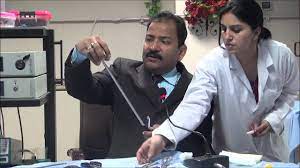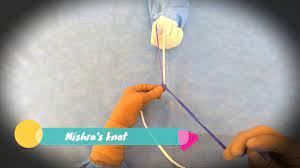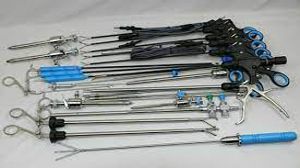Anatomy of Triangle Doom
Add to
Share
104 views
Report
6 days ago
Description
In the field of minimal access surgery, precise anatomical knowledge is the cornerstone of safety and success. One of the most critical regions encountered during laparoscopic inguinal hernia surgery is the Triangle of Doom. Dr. R. K. Mishra, a pioneer in laparoscopic and robotic surgery, has extensively described this region in his lectures and surgical teachings, emphasizing its importance in preventing life-threatening complications. Definition The Triangle of Doom is a vital anatomical landmark seen during laparoscopic hernia repair (TAPP or TEP). It is named “doom” because of the presence of major vascular structures—injury to which can lead to catastrophic bleeding and even death if not recognized immediately. Boundaries of the Triangle of Doom According to Dr. R. K. Mishra, the triangle is formed by: Medial boundary – Vas deferens (in males) or round ligament (in females). Lateral boundary – Gonadal vessels (testicular or ovarian vessels). Base – Peritoneal reflection. This triangular region lies deep in the posterior aspect of the inguinal canal and must always be respected during dissection and mesh fixation. Contents of the Triangle of Doom The contents include the most dangerous vascular structures: External iliac artery External iliac vein Deep circumflex iliac vein (in some variations) Any injury to these vessels during hernia repair can cause massive bleeding that is extremely difficult to control laparoscopically. Clinical Significance in Surgery Dr. R. K. Mishra emphasizes that: No tacks, staples, or sutures should ever be placed within the Triangle of Doom while fixing the mesh. Gentle and blunt dissection should be performed to expose landmarks without excessive cauterization. Clear recognition of the vas deferens and gonadal vessels is essential to avoid straying into this dangerous zone. Surgeons should always identify the safe zones for mesh fixation—away from both the Triangle of Doom and the neighboring Triangle of Pain. Educational Perspective In his training programs at World Laparoscopy Hospital, Dr. R. K. Mishra repeatedly highlights the anatomy of the Triangle of Doom using 3D models, live surgeries, and simulation-based teaching. His guidance has helped thousands of surgeons worldwide develop the skill to recognize and avoid injuries in this critical anatomical region. Conclusion The Triangle of Doom serves as a surgical warning sign during laparoscopic hernia repair. With its boundaries marked by the vas deferens and gonadal vessels, and its contents being the iliac vessels, this region should be handled with utmost caution. As Dr. R. K. Mishra teaches, respecting this anatomical landmark is the key to performing safe, complication-free hernia surgery.
Similar Videos






